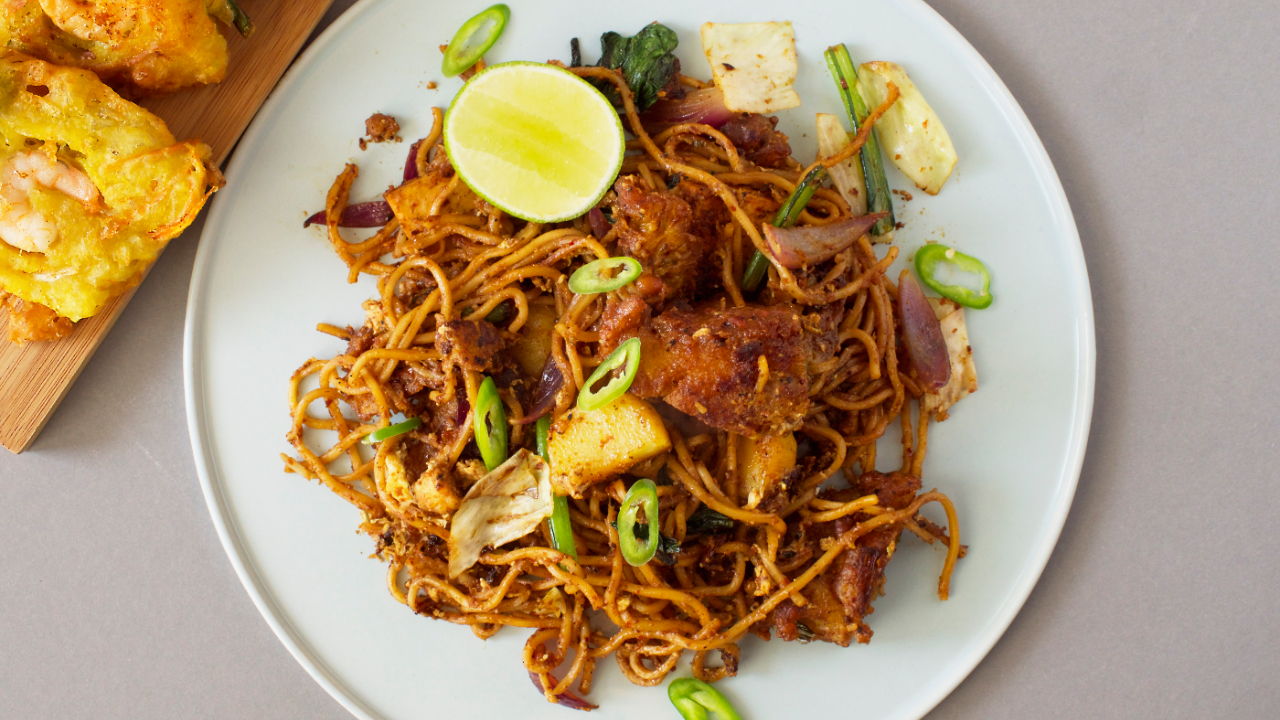Mee goreng mamak is a fried noodles dish which is commonly found in mamak eateries throughout Malaysia and Singapore. One of the most popular cities in Malaysia that serves mee goreng mamak is Penang. This noodles are popularly known for its sweet and spicy flavours with some nutty taste to it. Although this may not be a simple and quick mee goreng recipe, rest assured that it is an authentic version.
Mee goreng mamak paste
The paste used in mee goreng mamak is no more than a combination of several ingredients. It has a blend of dried chilies, shallots, dried prawns, dhal and also peanuts. Dhal, a common ingredient in Indian kitchens is a term used for dried split legumes. Adding it to the paste gives the noodles the mild grainy texture for which mee goreng mamak is known.
Storing mee goreng mamak paste
The ready paste can be stored in the refrigerator for up to 5 days. For longer storage, freeze 1.5 tablespoonfuls of paste in silicone tray moulds individually. Once frozen, transfer them into an air-tight container or zip lock bag for storage up to 3 months. Please note that the paste has to be kept frozen.
Prawn fritters
Besides the paste, prawn fritters are the other ingredient that makes mee goreng mamak different from the rest of the fried noodles available. Cucur udang as it is known in the Malay language, adds some crispiness to the noodles. Biting into the spongy and soft insides of the prawn fritters makes the noodle dish so much more interesting.
Substitute for yellow noodles
Mee goreng mamak uses soft medium sized egg noodles. The noodles do not have the al-dente texture that is more known in western noodle dishes. In Malaysia and Singapore, fresh yellow noodles are sold either in loose form or in a package at the wet markets. In Asian grocers, yellow noodles available are usually dried and marketed as egg noodles or 'chow mien' noodles. Otherwise, substitute with spaghetti. Just soften it before frying.

